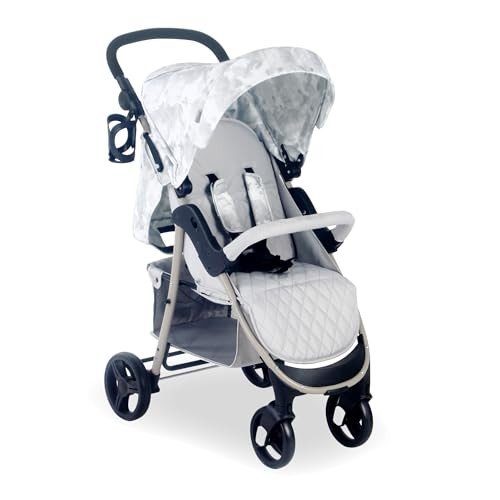10 Things We All Love About Prams
Prams and Pushchairs: A Comprehensive Guide for New Parents
Navigating the world of baby transport can be overwhelming for brand-new parents, specifically when it comes to selecting between prams and pushchairs. Each choice offers unique benefits and limitations, indicating that making a notified decision is essential. This short article intends to offer an extensive understanding of prams and pushchairs, their distinctions, functions to think about, and pointers for selecting the best one.
Comprehending the Basics: Prams vs. Pushchairs
Prams and pushchairs are terms typically used interchangeably, but they describe different kinds of baby transportation systems.
Definitions:
- Prams: Traditionally designed for newborns and infants, prams have a big, fully flat bassinet that enables optimal comfort and safety throughout early phases of a child's life.
- Pushchairs: Designed for older babies and toddlers, pushchairs normally have an upright seat that is appropriate for kids who can support their head and neck. They typically come with adjustable recline alternatives.
Secret Differences
Function
Pram
Pushchair
Design
Flat bassinet
Upright seat
Age Suitability
Newborn to around 6 months
6 months to 4 years
Mobility
Normally much heavier, less foldable
Frequently lightweight and foldable
Comfort
Comfortable for newborns, snug fit
Adjustable, can be reclined
Use
Perfect for strolls and leisure
Versatile for day-to-day activities and travel
Features to Consider When Choosing Prams and Pushchairs
Safety Features
- Harness systems (5-point vs. 3-point)
- Braking systems (foot-operated vs. hand-operated)
- Stability and toughness of the frame
Weight and Portability
- Think about the weight of the pram or pushchair
- Search for a design that folds quickly for transportation
Size and Storage
- Inspect dimensions for fitting through entrances and in automobile trunks
- Try to find extra storage choices like baskets or pockets
Comfort
- Padded seats and adjustable recline positions
- Suspension systems for smoother trips on rough terrains
Weather condition Protection
- UV protection in sunshades
- Options for rain covers and windscreens
Wheels and Maneuverability
- Wheel size and type (repaired vs. swivel)
- Suspension systems that aid handling and comfort
Durability
- Designs that transform from pram to pushchair
- Sturdier frames that can accommodate growing children
Popular Types of Prams and Pushchairs
When thinking about prams and pushchairs, parents often find various styles dealing with specific needs. Here are some widely known types:
1. Requirement Prams/Pushchairs
These are good all-rounders, designed for daily use with a sturdy frame and sufficient storage space. They are frequently adjustable and can deal with various terrains.
2. Travel Systems
These include a cars and truck seat and a stroller that can be used together, making it simple to transfer the baby from the cars and truck to the pram without waking them up.
3. Umbrella Strollers
These are lightweight and foldable, perfect for fast trips and travel. While convenient, they frequently lack some of the security and comfort features found in heavier designs.
4. All-Terrain Strollers
Created for off-road experiences, these strollers have larger wheels and a more rugged frame, making them ideal for active households.
Picking the Right Pram or Pushchair
When picking the ideal pram or pushchair, moms and dads must take the following actions:
Assess Lifestyle Needs: Consider how you will utilize the pram or pushchair (everyday walks, travel, uneven surface) and choose accordingly.
Test Drive: It's helpful to physically test the models at the shop, examining for managing, comfort, and weight.
Research Brands: Look at evaluations and suggestions from other parents about specific brand names or models.
Consider Future Needs: Think ahead to ensure the choice will work as the kid grows. Convertible models use versatility.
Budget plan: Set a budget however also aspect in quality and durability. In some cases investing more at first can save costs in the long run.
Frequently Asked Questions
What is the best age to start utilizing a pushchair?
Many pushchairs can be used for babies from about 6 months old when they can adequately support their heads and necks. Make certain to check the producer's specifications.
Are prams appropriate for newborns?
Yes, prams are ideally matched for newborns due to their flat bassinet design, supplying a comfy and protected environment.
How do I clean a pram or pushchair?
Constantly refer to the manufacturer's standards, however the majority of covers are detachable and can be washed. Wipe down the frame with a wet fabric and prevent using harsh chemicals.
Can I utilize a pram or pushchair on public transport?
Various designs differ in size; lightweight and foldable choices are normally better for buses or trains. However, always look for transportation policies in your area.
How long can I use a pram or pushchair?
It generally depends upon the weight limitation specified by the maker, typically in between 15-50 lbs, or till your child no longer wishes to be pushed.
Choosing in between a pram and a pushchair is a substantial choice that caters to the lifestyle and needs of both the moms and dad and the kid. By comprehending the distinctions in between the two, assessing critical features, and choosing the best model, parents can guarantee they have a safe, comfy, and practical transportation solution for their children.
Arming oneself with understanding supplies parents not just peace of mind but likewise the self-confidence to make the best option for their kid's early experience into the world. Pushchairs And Prams demand various options, so taking the time to research and test what fits can alleviate some of the tensions that come with brand-new being a parent. Delighted strolling!
